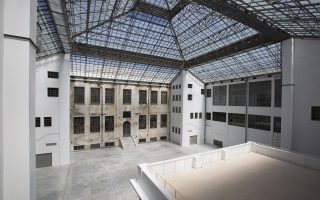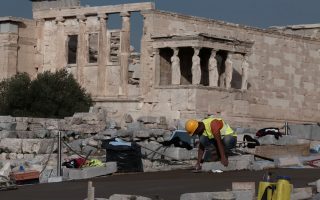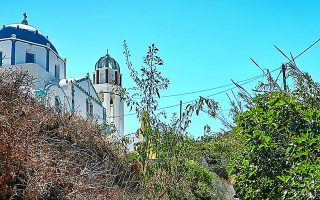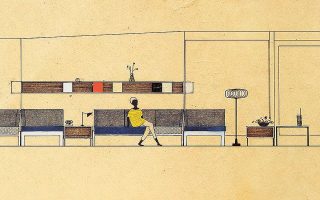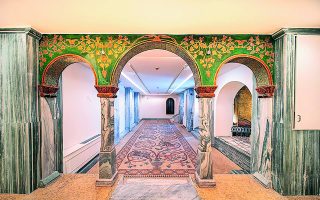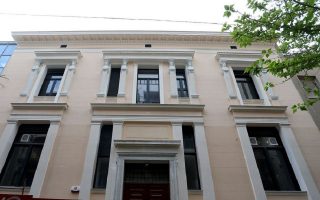City’s ‘memory’ inspires Aristotelous Square revamp plan
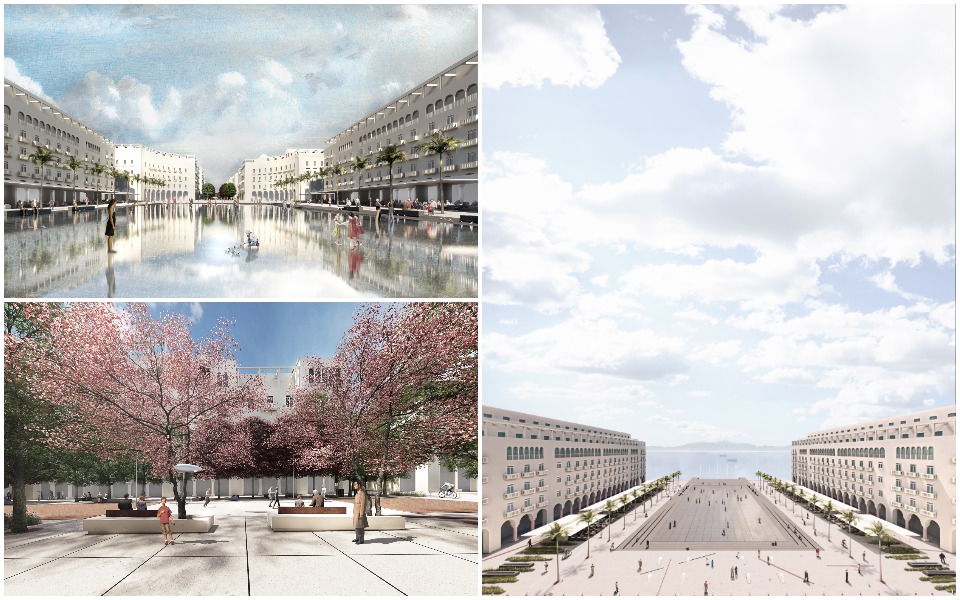
Aristotelous is one of the most prominent and historic squares of the East Mediterranean region, a landmark site, and, together with the Aristotelous axis, constitutes perhaps the most iconic public space in Thessaloniki. The main characteristic of the square and the axis is their exceptional Ernest Hebrard facades. The architectural competition was called for the redesign of the axis, starting from a square on Egnatia Street toward the sea, and Aristotelous Square. The proposal foresees the presentation of traces of the northern port city’s urban fabric before the 1917 fire, in a bid to create a meaningful connection between the future of this metropolitan axis and its past.
“Memory Threads” are select traces of the old city that serve both as a reminder of a part of history that has been “erased,” and at the same time indicate the direction to specific historic monuments that still exist in the city and belong to this old urban fabric. The proposal attempts to highlight Aristotelous Street as a metropolitan axis and Aristotelous Square as the mirror of the city.
The simple and symmetrical design elements throughout the intervention area will only be interrupted by the introduction of urban equipment, water elements and planting. The proposal seeks to highlight the historic buildings of Hebrard while introducing a new materiality palette that borrows its colors from the building facades, in an attempt to fully adapt to the existing urban context.
Another important design aspect is the unobstructed view toward the sea throughout the axis. An open esplanade will be created in the middle, which will open up in the urban void of Aristotelous Square. This void is amplified by the strong presence of the Thermaikos Gulf and Mount Olympus.
The two squares, one on Egnatia Street and that on Aristotelous, function both as thresholds and connectors. The square on Egnatia connects the project with the Ancient Agora and the rest of the axis to the north, and that on Aristotelous connects the south with the sea, using water as the main design tool. The elements of both earth and water are diffused all along the axis in order to create a design continuity between the city and the sea.
Although the proposal has a design and material continuity, it also connects with the rest of the city at each point it intersects with the existing urban fabric. Another way to connect the new intervention with the city is by introducing specific identities to each one of its parts, always in relation to important adjacent city buildings and monuments.
The square on Egnatia will become the “Palm Tree Square,” a small oasis in the middle of the city, using trees that won’t block the views and will create a natural canopy all year long. Next to the Kapani and Modiano markets, the “Water Room / Ephemeral Market” will have public fountains and a structure that allows for multiple ephemeral market typologies.
Further south, the “Manoglia Room” will be characterized by the incredibly beautiful trees with the pink-white flowers that already exist on the axis. Between Vasileos Irakleiou and Tsimiski streets, the ground will be revealed again, and the old clock will be restored into a new sitting sculpture, creating the “Room of Time / Ephemeral Sculpture Garden,” with a rotating sculpture exhibition.
Right before Aristotelous, a threshold between Tsimiski and Mitropoleos streets will prepare the visitor for the openness of the main square. A slight depression in the square’s surface will allow for the creation of three steps toward the sea, previously erased by the square’s natural inclination. Two light canopy structures will be provided for seating areas, also directing foot traffic on either side of the main square, borrowing the scale and dimensions from the column line of the historic facades. Water elements will be introduced in the center in order to achieve the metamorphosis of the urban space according to the seasons, or the time of day: The square could be dry, spray water for playful afternoons, or be wet and mirror the emblematic facades, until it dries out again.
Multiple evergreen and deciduous trees will be planted throughout the axis, thus offering different aspects according to the season. The Washingtonia robusta palm tree has been selected for both squares for its durability and long life span, while its long trunk will allow for unobstructed views. Last but not least, narrow strips of low greenery, comprising aromatic plants, flowers and shrubs, will surround all seating areas.
Ariadni Vozanis, associate professor at the National Technical University of Athens, and Evita Fanou, PhD candidate, NTUA, led the team behind the winning design for the Aristotelous Square project.
